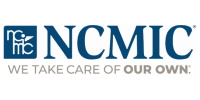The New York State Chiropractic Association proudly presents the 2nd program for Achieving Excellence in Chiropractic Practice In the 21st Century Certificate Program Saturday, April 9, 1 PM to 7:00 PM at the New York Chiropractic College Postgraduate Center Levittown, NY. Call the NYCC Postgraduate Center at 800-434-3955 Today and Reserve Your Please. This is the second in a series of symposiums designed to enhance your professional skills so you can master both the challenges of today’s managed care arena and tomorrows changing healthcare delivery system. The total series is 36 C.E. credit hours. There are 6 symposiums with a certificate included upon completion. Each symposium is 6 C.E. credits. The second Program will be broken down into a Six Hour session and will feature: • Comparison Shopping: Cost of Chiropractic Care vs. Medical Treatment, Dr. Anthony Rosner, Director of Research at the FCER, PhD. Harvard • Distinguishing Fact from Fiction in Clinical Studies, Dr. Anthony Rosner • Medicare P.A.R.T. Documentation: the National Standard, Dr. Peter Pramberger, NY Chiropractic Advisory Committee (CAC) representative (1 CA will be able to attend for an additional $25 for this discussion) The Fee for this sensational program is $120.00 per session for NYSCA members. For non-NYSCA members- $150.00 per session SEATING IS LIMITED, SO RESERVE YOUR SEAT TODAY! For Reservations, Please call the NYCC Postgraduate Center at 800-434-3955 Committee Members: Chairman: Louis Lupinacci, D.C., Mariangela Penna, D.C., Thomas Ventimiglia, D.C., James Kaufman, D.C., John Pellegrino, D.C., Angelo Ippolito, D.C., Janusz Richards, D.C., Michael Siciliano, D.C., Malcomb Levitin, D.C., Michael Bernstein, D.C., Lloyd Angel, D.C., Richard Scherer, D.C., Richard Meoli, D.C.., Peter Pramberger, D.C., Lloyd Kupferman, D.C., Bruce Silber, D.C. What is the Center for Excellence? The Center of Excellence for Chiropractic Practice in the Downstate region is a program sponsored by the New York State Chiropractic Association. The purpose of the program is to advance the clinical knowledge and skills of the doctor of chiropractic on a quest toward best practice procedures. The program emphasizes patient centered care that is effective and efficient. The program is designed for progressive doctors who wish to develop their skills and promote themselves in an integrated healthcare model. The Center for Excellence is the result of the New York State Chiropractic Association long range planning toward integrating the practice of chiropractic into the mainstream of healthcare The New York State Chiropractic Association has presented a series of conferences on the integration of chiropractic practice into mainstream health care over the last several years. We have discussed the challenges that face our profession today and in the future, and some possible solutions to these challenges. In light of the changes coming up on the horizon of health care, it is apparent that the need for change and new initiatives are more important than ever. Here is a brief list of some of the challenges we face: 1. The healthcare industry is demanding that the healthcare that is delivered be evidenced based 2. The trend toward consumer driven health care will shift more responsibility to the patient 3. There is a need for chiropractors to be part an integral part of the patient’s healthcare team 4. There is a need to define and establish a model for “best practice” chiropractic care Goals of the Center for Excellence 1. Integrate chiropractic into the mainstream of health care 2. Develop the skills of the field practitioner to work in interdisciplinary teams as the practitioner of choice in providing patient centered health care that is effective for neuromusculoskeletal care of spinal conditions (injuries, disorders, diseases, illnesses, ailments or complaints) 3. Train doctors to utilize evidence based practice parameters and best practices procedures by employing quality improvement outcome measures and informatics 4. Help develop models for the role of chiropractic care in mainstream healthcare such as the “Bridges for Excellence” program or the “Leap Frog Program” 5. Increase public awareness and the healthcare industry awareness of the role of chiropractic in today’s health care system and for the future 6. Help develop Wellness care protocols for the Doctor of Chiropractic Proposed Center for Excellence Action: The committee has come up with 5 specific projects that we feel the downstate area can develop. Project Planning Strategies: I. Initiate educational Center for Excellence Conferences throughout New York State Set up a series of conferences to keep doctors informed of current healthcare trends II. Develop a chiropractic model for integration with mainstream healthcare including: Develop protocols for working as a part of an integrated healthcare team Develop protocols for standards of patient centered care III. Develop a Low Back Pain Model for programs such as the Bridges to Excellence Help to establish professional interdisciplinary teams with the doctor of chiropractic as the doctor of choice for conservative care of the low back Help to promote NCQA accrediting protocols and AHRQ protocols for chiropractic IV. Initiate a Research in Practice Clearing Center for the practitioner Collect actuarial studies on the effectiveness of chiropractic care Collect existing research information for the public information committee Collect data and consensus documents for reasonable and customary chiropractic care Collect data and consensus documents on standards of chiropractic care and treatment V. Public Information Program: Promote the web based public service program to disseminate to the media Develop protocols to establish chiropractors as spinal experts Develop protocols to establish chiropractors as health/wellness experts Develop a Speakers Bureau to work with media public services Develop NYSCA public policy resolutions The Center for Excellence Program will help you determine what an integrated practice may look like, and how to improve your practice procedures to become patient centered, more efficient and evidence influence. Chiropractic has a significant role in the health care arena, and our potential for growth is tremendous. The Center of Excellence will challenge our profession to establish cultural authority within the healthcare system. Chiropractic care should be a part of a mainstream healthcare interdisciplinary health team, with the doctor of chiropractic being the doctor of choice in providing conservative patient centered care that is most effective for neuromusculoskeletal spinal conditions.




